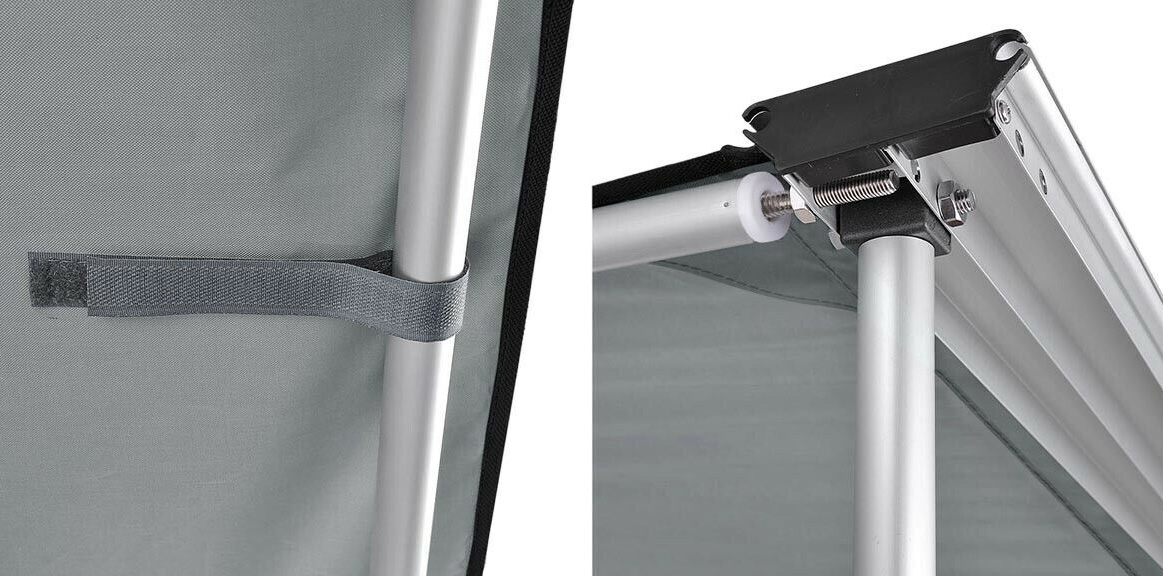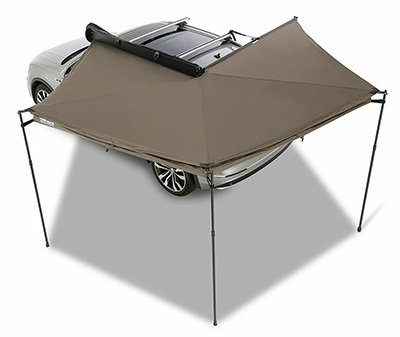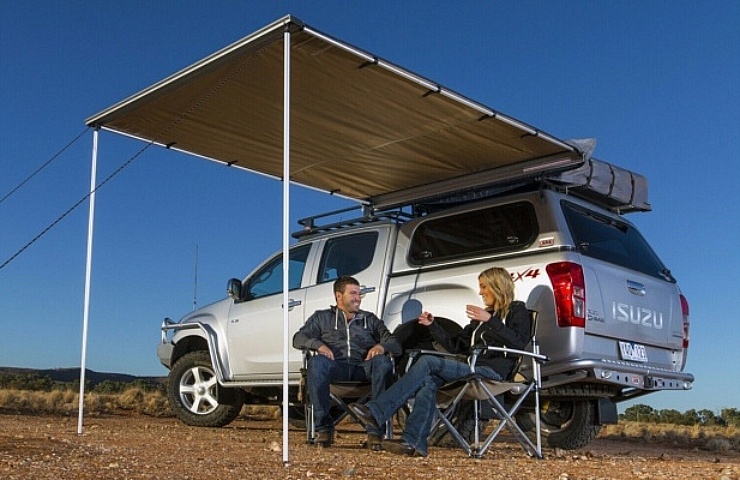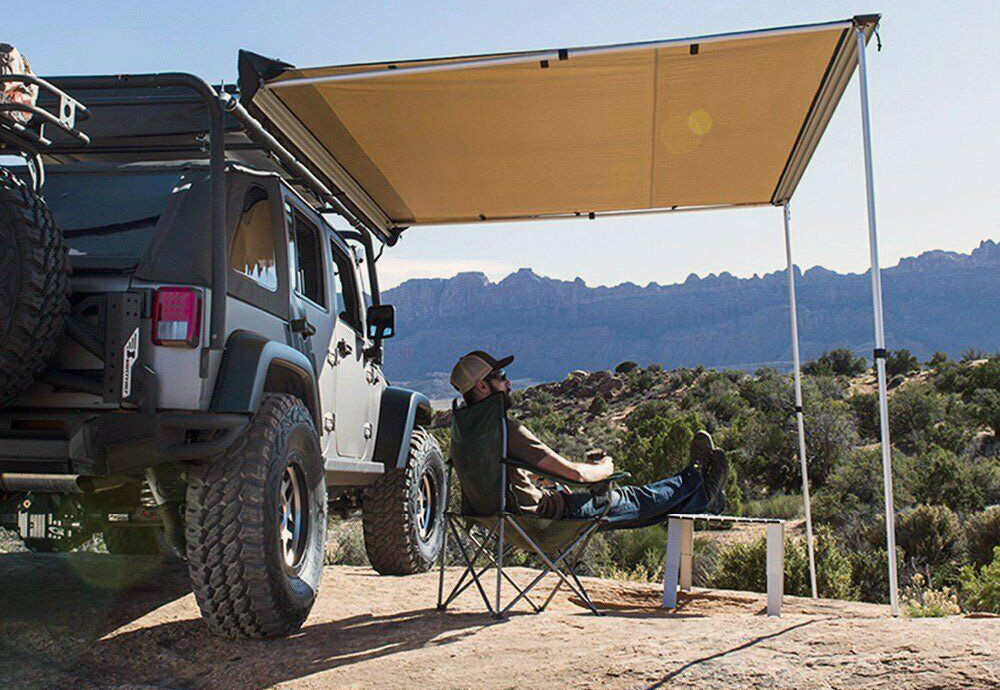Equipping your adventure vehicle or camper with an awning isn’t just a nice upgrade. The shade and shelter provided by a vehicle awning are a matter of essential comfort. This quick guide examines the options available on eBay.
Size of Vehicle Awnings
The narrowest awnings on the market today are typically about four feet. The widest units span nearly the entire length of a van or wagon. These larger units don’t take up that much more space on the roof but can provide a lot more protection. When opened, awnings commonly cover a space about eight feet out from the vehicle.
Another critical factor is how they get set up. A standard car awning consists of one panel and two poles, pegs, and guy ropes. In addition, most awnings come with a zippered bag for storage.

Velcro straps or loops usually affix awning sides.
Vehicle awnings typically mount to a roof rack or platform rack. A little research goes a long way. Shoppers should confirm what mounting brackets are required for their roof rack and vehicle.
Every awning needs hardware to be mounted. While many kits have hardware included, some may need to be purchased separately. Check before buying.
After an awning is mounted, it usually doesn’t require any special tools to set up or maintain.
One person can easily set up simple awnings. However, more complex units are best set up with two people because they can require multiple poles and a few more steps to secure them.
Critical Features and Bonus Goodies


Here are the basic steps for setting up an awning:
- Unzip the carrying bag and fully unroll the awning while holding off the ground.
- Pull out the horizontal awning support poles, tighten them in place by twisting the poles, and secure each end into the end of the awning fascia.
- Set up the vertical poles in the desired height position, tighten them, and secure them into place.
- Secure the awning with supplied Velcro or a tie-type system to fasten it against support poles.
- If windy, use supplied guy lines (thin ropes) and pegs to secure the awning to the ground. You may need a mallet if the ground is firm.
- Enjoy the shelter.
Batwings and Awnings with Sides

Batwings are usually bigger and heavier than standard awnings. In recent years, they have become popular because they offer so much shade.

Finally, caring for your vehicle awning is critical. Don’t store it when it’s wet because mold could develop. Instead, clean it regularly with mild soap and water. Inspect it regularly, especially if it’s been in a strong wind or driving rain.
It’s best to know the condition of an awning before a trip begins. After all, you will be relying on it to keep you comfortable and dry.






